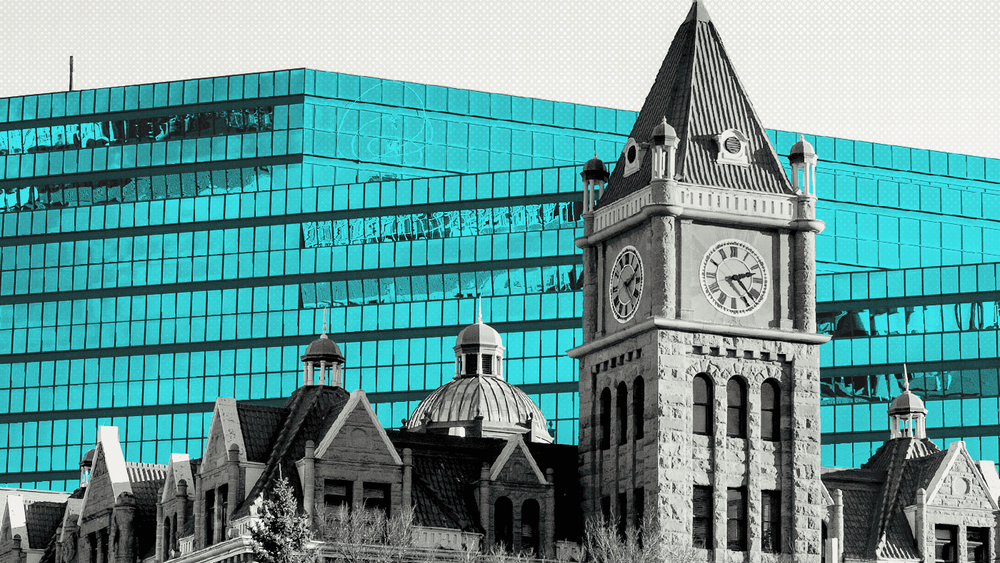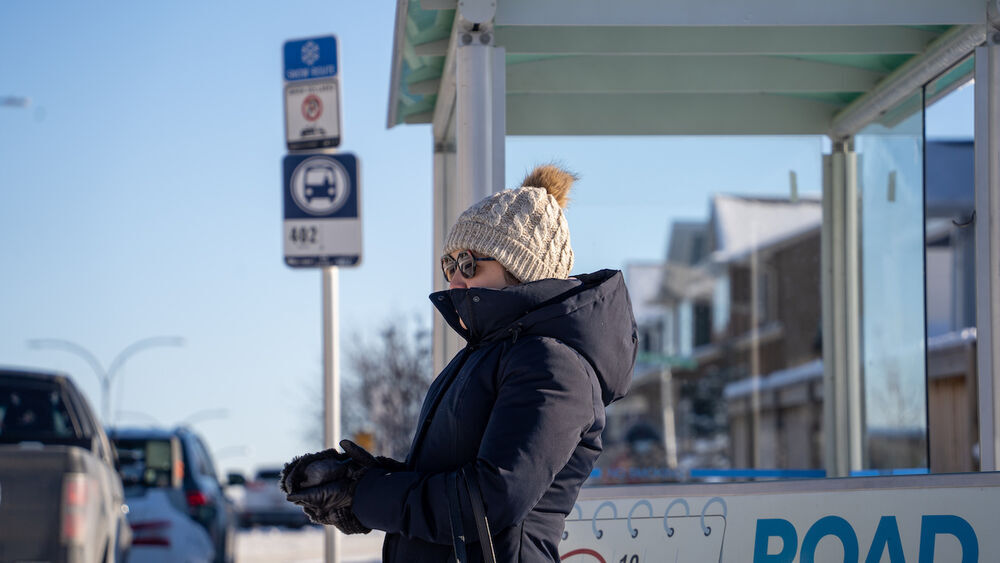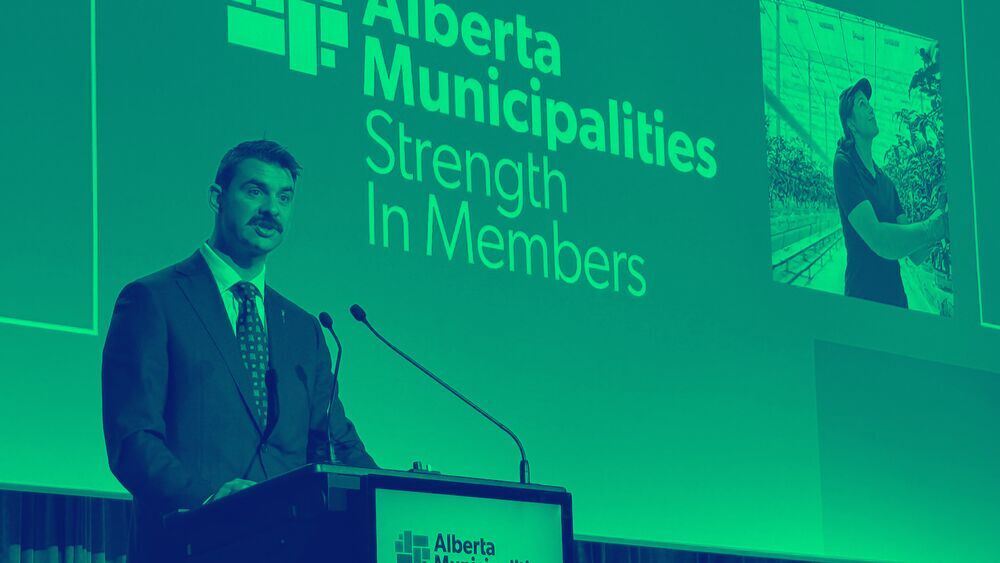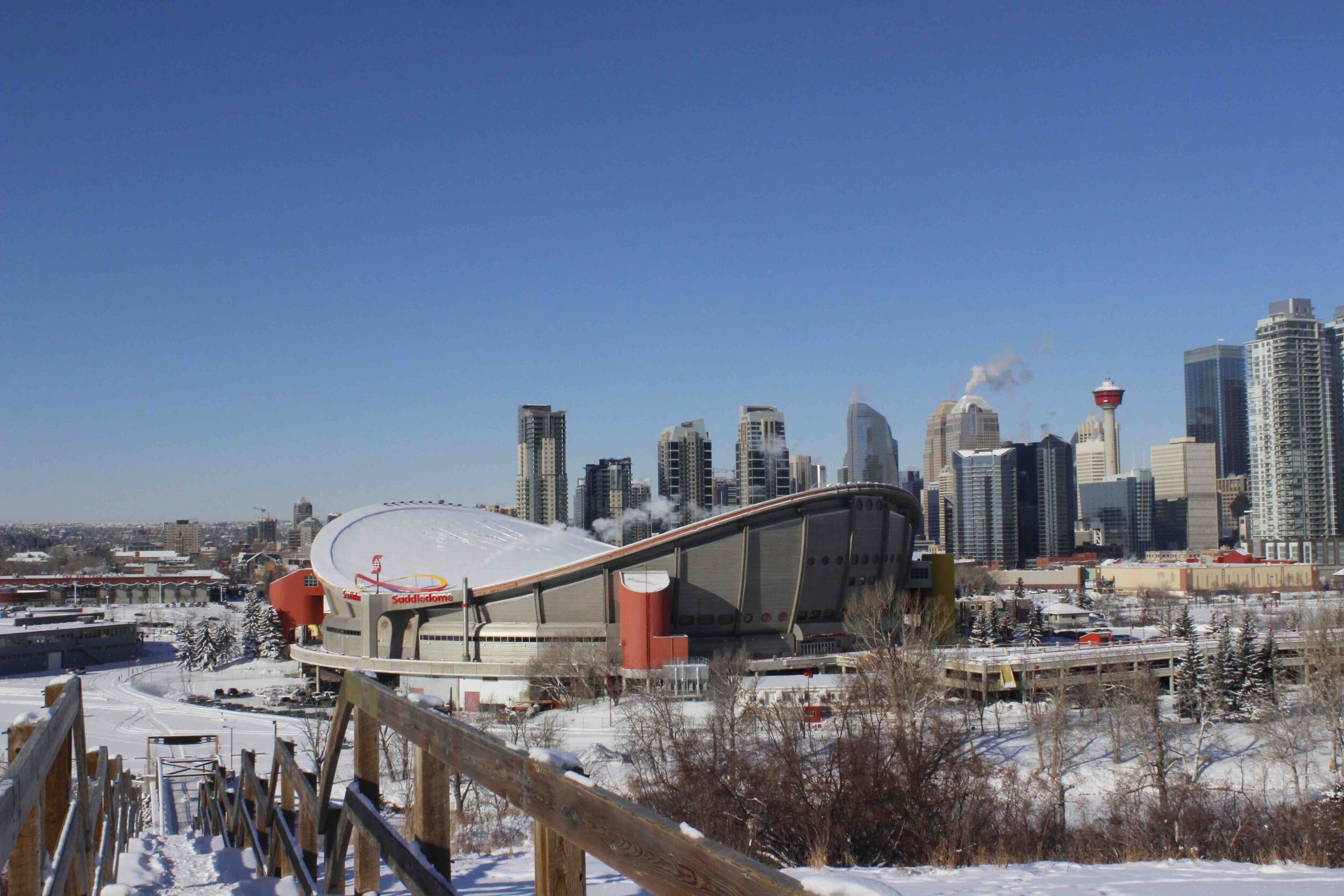
Arena talks between the Calgary Sports and Entertainment Corporation (CSEC) and the City of Calgary reached a stalemate in September 2017, leaving many Calgarians wondering what the next chapter in the relationship will be.
Status update: it’s complicated.
Immediately recognizable by its unique shape, the arena is a symbol of Calgary and home to one of the most supported NHL teams in the league.
Built in 1983 and originally called the Olympic Coliseum, the Saddledome was the crown architectural jewel in Calgary in the run-up to the 1988 Winter Games—and now it’s one of the biggest pieces of contention.
The IOC says the Saddledome is usable for 2026. Rogers Centre in Edmonton is also on the table as a possible Olympic hockey venue. But Flames owners—and NHL Commissioner Gary Bettman—still want their new arena.
“There are always interests behind these bids — it’s not just the pure joy of sport.”
—Michael Heine, International Centre for Olympic Studies
A 2026 Olympic bid could get things moving for the Flames. Michael Heine, director of the International Centre for Olympic Studies at the University of Western Ontario, suspects the Flames stand to benefit if Calgary is awarded the Games.
“There are always interests behind these bids—it’s not just the pure joy of sport,” said Heine. “The Olympics are always a very good vehicle for that kind of private-based intervention.”
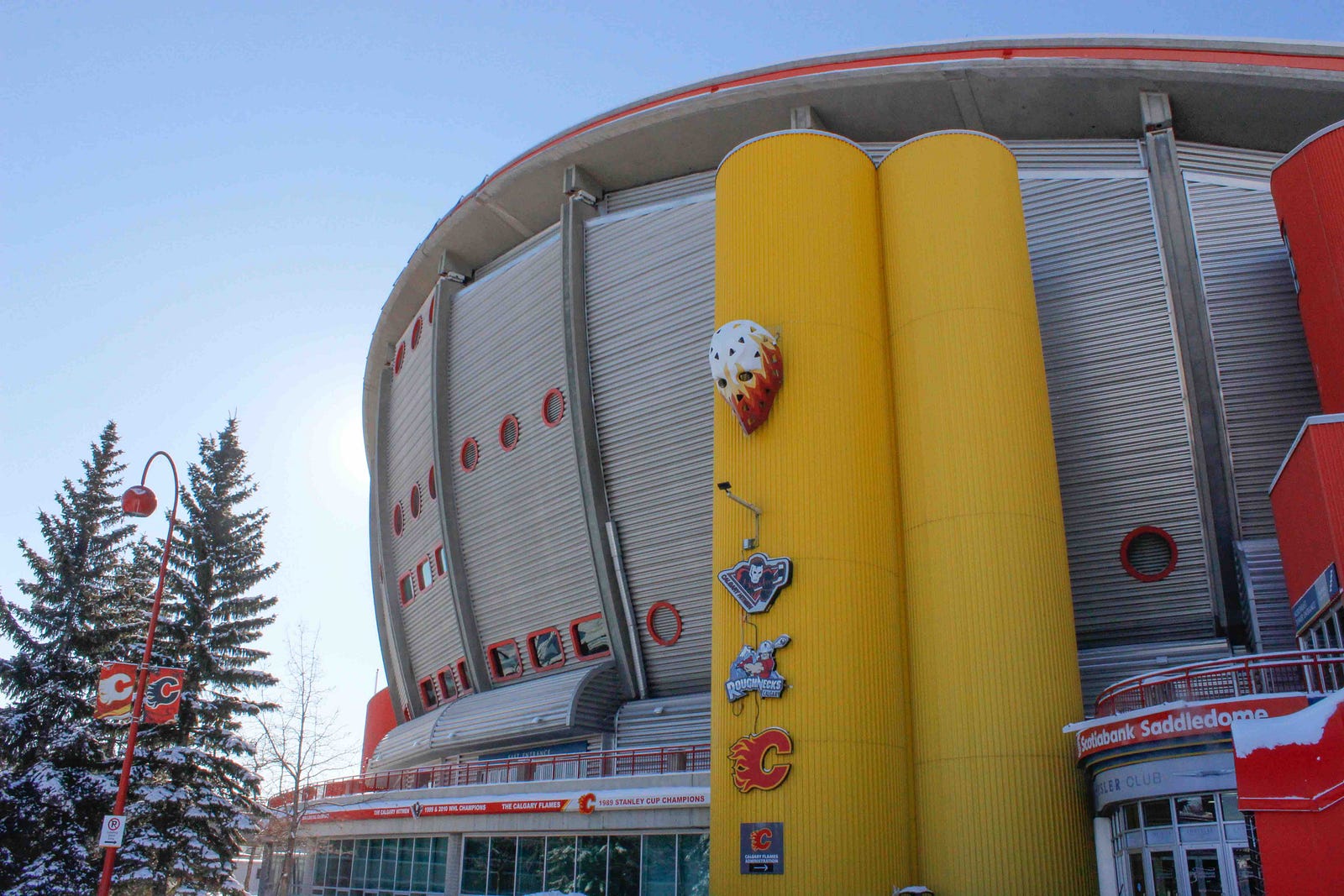
Peter Ryan, a public relations professor at Mount Royal University, says the Flames are laying low and biding their time.
“I don’t think we’re going to hear more about this story unless its prompted by… changes in government policies, or pools of money from the NHL, or something external like a Calgary Olympic bid,” Ryan said.
“It really leaves everything in [the Flames’] court at this point.”
David Edmunds is a longtime Calgary architect with GEC, the firm that designed the Dome and was involved in the CalgaryNEXT proposal. He believes that while the Saddledome could be used for 2026—“you can get anything to work for ten days,” he says—it no longer provides the level of amenity that fans expect.
“The Olympics are an opportunity… another reason to build a new building,” he said.
“Every single building we put together for the 1988 Olympics is in need of refurbishment, revitalization or replacement,” said Edmunds. “If you want to keep the sport legacy in the city, you need to retool all of the stuff that supports that legacy.”
Although the IOC has okayed the Saddledome, Edmunds says there are other reasons to upgrade. At its core, Edmunds says, the Dome is an event centre—one that is failing to meet the standards of such venues in North America, as well as the needs of the surrounding area.
“Think of [the Saddledome] as almost a small community that has to be economically viable,” said Edmunds, adding that the Dome doesn’t adequately support the business that needs to go on in it and around it.
This, he believes, is one of the biggest factors contributing to its obsolescence.
But Colin Craig of the Canadian Taxpayer Federation (CTF) says not enough attention has been focused on upgrading the Saddledome, which would be a cheaper alternative than constructing a whole new venue.
The CTF has created a petition to stop taxpayer dollars from going towards pro sports arenas that some citizens may not even use.
Calgarians, says Craig, should be able to “decide for themselves if they want to support the Flames by buying a ticket to one of their games, buying merchandise or perhaps making a donation.”
The CTF is also opposed to an Olympic bid. “To borrow billions to pay for an Olympic Games is like putting $2,000 on your credit card to pay for a weekend house party,” Craig said. “It's reckless.”
A Calgary Saddledome Foundation report, obtained by the CTF through a freedom of information request, details a number of different ways the Dome could be used if a new arena is built.
These include turning the venue into an multi-use event centre, recreational facility, convention centre or a smaller arena with a lower spectator capacity to be used as the second ice-surface during a 2026 Games.
Decommissioning and even demolishing the venue are also listed as possibilities.
“Hockey arenas or sports facilities don’t have to become the icons of a city, and in this city it has become one of them.”
—Andrew Tankard, GEC Architecture
Although GEC Architecture admits the building is not what it once was, they’re proud of what the Dome has meant to the city for more than three decades.
“If someone draws the skyline of a city, then what does Calgary look like?” said Andrew Tankard, a partner at GEC. “It’s the Calgary Tower and it’s the Saddledome.”
“Hockey arenas or sports facilities don’t have to become the icons of a city, and in this city it has become one of them.”
Lexi Freehill
With files from Jeremy Klaszus
This story is part of Hindsight 2026, a joint project between the Sprawl and the Calgary Journal (which is produced by journalism students at Mount Royal University). We’re digging into past Olympics to evaluate whether a 2026 Winter Games in Calgary would help or hinder our city.
Support independent Calgary journalism!
Sign Me Up!The Sprawl connects Calgarians with their city through in-depth, curiosity-driven journalism. But we can't do it alone. If you value our work, support The Sprawl so we can keep digging into municipal issues in Calgary!
